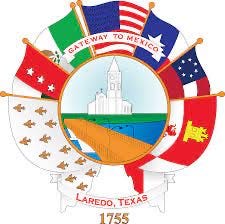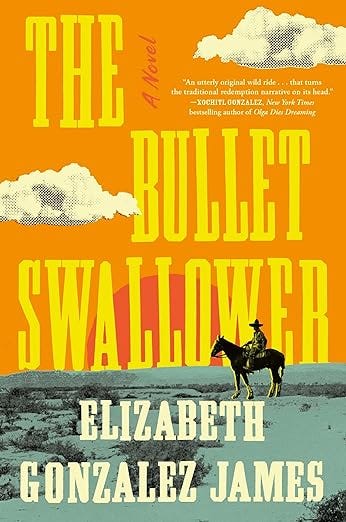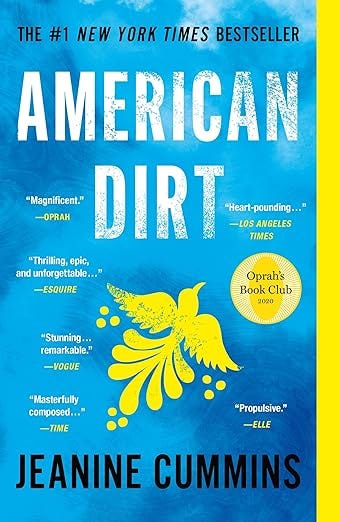What makes a book compelling? Join me in reading good books and honing the craft of writing.
Living in the south, we don’t see much snow, but enjoy it. Of course, I have to leave the warm inside and my steaming coffee, cross the threshold and go out to experience it.
The snow deadens most noises, except a train passing upwind. I hear the steel wheels on the tracks, the horn give warning at the crossing. The chill wind bites my face and hands, forcing me to back inside to write.
We’re drawn to cross thresholds and borders not always knowing what’s on the other side.
’s debut novel, More Than You'll Ever Know, is a mystery/suspense book set on the U.S.-Mexico border.How does a polygamous spouse avoid the internecine drama of a Sister Wives type marriage? Live two separate lives. Except Gutierrez flips on its head the story of a man having two wives, two families. She not only tells about a woman with two husbands, two separate families, neither of which know about the other, but ups the stakes with one husband jailed for murdering the other. By setting the story on the border, she divides the families in a smart metaphor.
Unlike some novels on the market, Gutierrez refreshingly gauges her readers as no dummies. She feeds us real-world settings. It’s 1983 and Delores “Lore” Rivera lives in Laredo, Texas, on the U.S.-Mexico border with her husband Fabian and their twins. The recent devaluation of the Mexican peso is impacting Fabian’s business—Fabian makes doors and gates of iron scrollwork—and their marriage.
Lore climbs into bed with Fabian and proceeds to act as a loving wife. Only to be rebuffed:
“How can you act like everything is normal?” His dark eyes were sunken, his beard unable to mask the downward pull of his lips as he sat against the oak headboard. “I’m going to have to lay off Juan tomorrow, and he’s been with us almost since the beginning!”
“I know.” The recession was all Fabian had talked about for months, the confluence of crises that had led to the peso’s shocking devaluation from 23 to the dollar in 1980 to 150 to the dollar today—imagine, a peso worth less than a penny!—with predictions it would get ten, even twenty times worse before it got better. “You don’t have a choice, though,” Lore said, the way she always said at this point.
“I know that,” Fabian snapped, then lowered his voice. “Did I tell you his mother’s sick?”
Lore sighed. “Cancer, right?”
Fabian nodded.
“Everyone’s getting cancer these days.”
As life catches up with Lore and Fabian, can you feel the disconnect between the two? Fabian built the business, feels a loyalty to his employees, especially those who’ve been with him almost from the beginning. Gutierrez doesn’t deal in the tropes of a business owner being a bad capitalist for pursing a profit. Fabian is like reams of others, including us writers, just trying to make a buck. And he’s emotionally wrapped in it as he sees the efforts of his hard work dissolving. On the other hand, Lore, who works for a local bank with customers in Mexico, isn’t feeling the economic pinch in the same way. She’s hungry for tactile love. And she’s not getting it, which leads her to choose a path of not just infidelity, but joining a second family across the border.
The mid 1980s peso devaluation was a real event. Before the devaluation, border towns had structured their economies to cater to Mexican nationals crossing over on short trips. With Mexico’s recent oil wealth and rampant inflation, Mexican nationals found more purchasing power in Laredo’s (and other border towns) stores, plus they could visit family and friends before returning home. The devaluation stripped Mexican nationals of their advantage and they stopped crossing over to buy. Border towns like Laredo suffered.
Gutierrez’s picture of border life in the 1980s serves the reader well in providing historical context. Gutierrez doesn’t mention today’s border chaos; she doesn’t need to dilute her story of human weakness with political weakness. Compared to the complete mess today, the economic disruption along the border in the early 1980s was a local affair that eventually corrected itself. Today, where professional coyotes make money bringing over, and then dumping, thousands of people from Central and South America on a daily basis, not to shop, but to live, where the federal government is broken by political fecklessness, the border is a very different place.
Lore travels to Mexico City, a place built on an old lakebed. She meets customers wanting to put their pesos into a U.S. bank. While there, she wears a long red dress to an event where she runs into a stranger, Andres, soon to be the light in her life, much later the bane:
Lore kicks off her strappy sandals, letting them dangle from a fingertip. The hem of her dress, which she bought at Sanborns for thirty dollars, back when people still shopped, will be ruined. She doesn’t care. When she looks up at Andres, she recognizes the look in his eyes, a look she’s seen only once before, at the Plaza Theatre in 1967, just as Benjamin arrives at the church, screaming Elaine’s name, in The Graduate. Her first kiss with Fabian.
Her heart aches as Andres leans lower, and she can smell the wine on his breath as he murmurs, “Mexico City, the constantly sinking land. Even now, we’re sinking. Do you feel it?” His hand moves to the nape of her neck.
“I feel it,” she whispers.
Gutierrez lets us inside Lore’s head in a delectable way.
As a reader, I struggled with a few things in the book. One was Gutierrez dropped a lot of characters in the first couple of chapters and I found them hard to keep track of, especially as I tried to figure who was important and who wasn’t. Another was the alternating points of view. In addition to Lore telling her story, another character, Cassie, tells her story. Cassie is a true-crime writer who latches onto Lore’s tale of losing one husband to murder by the other. Their two lives roughly parallel one another and I found myself lost on the chapter changes as I tried to remember who was who. But don’t let my minor difficulties and criticisms deter you from reading the book. I’m glad I kept reading. Using two main characters, with their finely detailed and complicated lives, enriches the story.
As with her depiction of the border, Gutierrez masterfully captures the difficulties of a writing career choice. Cassie, in pursuit of her big story, is often broke, has to keep up her true-crime work and rely on her fiancée for financial support.
One other minor comment. I didn’t pick this up from the cover or the jacket copy, but I lost parts of the story because with its extensive use of Spanish. The book is written for bilingual readers. It’s not limited to scene setting; the characters in Lore’s life often use Spanish speaking to one another other.
There are no translations, no context clues, not even a glossary for the non-bilingual reader. Rather than get bogged down in deciphering and losing the story or even giving up on the book, I wound up skipping over the Spanish, hoping it wasn’t meaningful. This was a fiction, as a rule of editing says if it doesn’t advance the story, delete it. This was the first novel I’ve read where the title, More Than You’ll Ever Know, doesn’t just apply to the characters, it applies to readers like me.
Here are a couple other novels set along the border:
Elizabeth Gonzales James of
has a new book, The Bullet Swallower. James writes a family saga in two timelines: 1890s when a Mexican bandito crosses into Texas to save his family and the 1960s when a descendant who is a Mexican actor must dig into the past and learn its secrets. Among which is who pays for the sins of our ancestors, something which swirls along the borderlands as long as there is a border.American Dirt, by Jeanine Cummins, is a tale of running from danger, of crossing over into the U.S.
All the Best,
Geoff
If you enjoyed this post, please hit the heart “❤️” so others can find it. It’s at the bottom and at the top.









